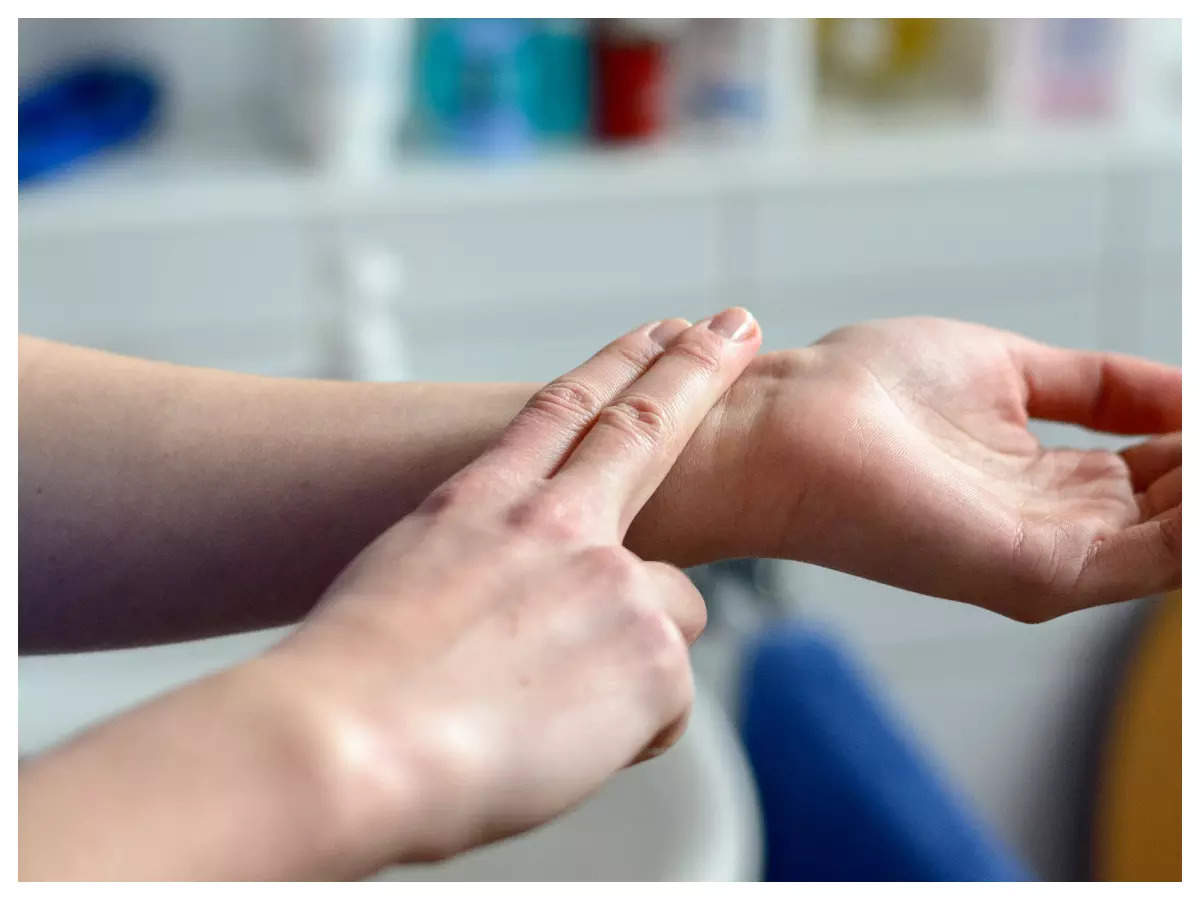
First of all let’s understand the normal range for your heart rate. As an adult, the normal range for resting heart rate is 60 to 100 beats per minute. This applies for anyone over the age of 17 – infants and children have faster heart rates due to their smaller body and heart size. This ‘normal’ range for heart rate doesn’t change across the adult lifespan. Slower than 60 is bradycardia (slow heart); faster than 100 is tachycardia (fast heart). “But some experts believe that an ideal resting heart rate is closer to 50 to 70. Regardless of what is considered normal, it’s important to recognize that a healthy heart rate will vary depending on the situation,” tells Dr. N. Ganesan, Senior Consultant – Interventional Cardiology, Meenakshi Mission Hospital & Research Centre, Madurai.

According to Dr. Jaideep Menon, Consultant, Adult Cardiology, Amrita Hospital, Kochi, “Heart rate is a good reflector of one’s general health condition, with exceedingly fit trained athletes having very low resting heart rates. Similarly, physically deconditioned individuals tend to have a higher resting heart rate. In addition, heart rate also reflects one’s mental health status with stressed, nervous, anxious individuals having increased rates.”
To make it simpler, the heart is fired to contract through electrical activity generated by a small battery in the heart called the sinoatrial node (SAN). The electrical current generated in the SAN travels through specialised conduction systems in the heart to spread to all parts of the heart and initiate mechanical contraction, which occurs nearly simultaneously in the two bottom chambers (ventricles) and the two top chambers (atria). “A low heart rate may result from SAN not firing at the normal rate, abnormalities in the conduction of current or maybe secondary to other non-cardiac medical conditions (hypothyroidism, high potassium in the blood, medicines that lower the heart rate, hypothermia etc). A low heart rate need not always be pathological, but when associated with symptoms like giddiness, fatigue, loss of consciousness (syncope), or when the heart rate does not increase commensurate with the level of physical activity it should be considered abnormal,” explains Dr Menon.
Warning signs of a slow and high heart rate
The heart rate is one of the early reflectors of underlying disease conditions, showing variability with myriad medical conditions ranging from anaemia, thyroid disorders, metabolic disorders, liver disease, inflammatory and infectious conditions etc.
Slow heart rate can be a sign of diseases such as:
- heart attack or other heart disease (such as “sick sinus syndrome”)
- certain infections (including Lyme disease or typhoid fever)
- high levels of potassium in the blood (hyperkalemia)
- an underactive thyroid gland
Diseases associated with a fast heart rate include:
- most infections or just about any cause of fever
- heart problems, for example cardiomyopathy (in which the pumping function of the heart is reduced), atrial fibrillation, or ventricular tachycardia
- certain medications (such as an EpiPen)
- low levels of potassium in the blood (hypokalemia)
- an overactive thyroid gland or too much thyroid medication
- anemia
- asthma or other breathing trouble
Workout and heart rate
Heart rates increase with exercise as a physiological response to meet oxygen demands of the body. “Rates up to 120-150 beats per minute may be seen during moderate to heavy exertion in normal healthy individuals. Lower resting heart rates may be seen in individuals who exercise on a regular basis. Heart rates may be as low as 40 beats per minute at rest in professional athletes. Heart rates between 50-60 beats per minute may be seen in cardiac patients on certain medications such as beta blockers,” shares Dr. Venkat D Nagarajan, Consultant Cardiologist and Electrophysiologist Lead – Heart Rhythm & Cardiac Device Services, Kokilaben Dhirubhai Ambani Hospital & Medical Research Institute.
Increased heart rate post COVID
COVID-19 infections can cause inflammation of heart or lung tissues, predisposing people to excessive risk of clot formation, increasing the incidence of heart attacks, strokes and pulmonary embolism (clots in the lungs). All of these conditions as well as persistently low oxygen levels in the blood due to Covid-19 infection can in turn cause persistently raised heart rates, adds Dr Nagarajan.
One of the major causes of death following COVID 19 infection has been cardiac involvement alongside development of clots in the lung (pulmonary infarction). Cardiac abnormalities secondary to COVID 19 could be secondary to a myocardial infarction, myocarditis (inflammation of the heart due to the coronavirus), stress cardiomyopathy (mimic a myocardial infarction both in symptoms and presentation) or by way of abnormalities of the heart rhythm (atrial fibrillation) all of which occur during or immediately after the infection, shares Dr Menon.
A small number of individuals continue to complain of palpitation or fatigue even after 1 month of COVID19 infection (long COVID). These individuals would require a detailed cardiac and pulmonology assessment to rule out permanent damage or sequelae.
Dr Nagarajan adds, “Initial tests required for further investigation of heart rhythm or rate abnormalities include an electrocardiogram (electrical recording of heart activity), ambulatory 24 hour heart rate monitoring, echocardiogram (ultra sound scan of heart to assess pumping function and other valve abnormalities) and blood tests to exclude conditions such as thyroid abnormalities, infections, anaemia (low blood count) and electrolyte disturbances (such as high or low potassium and magnesium levels).”
- What are the common symptoms of a slow and fast heart rate?
Common symptoms of a slow heart rate include:⦁fatigue⦁dizziness, lightheadedness, fainting or near-fainting⦁confusion⦁an inability to exercise.Common symptoms of a fast heart rate include:⦁fatigue⦁dizziness, lightheadedness, fainting or near-fainting⦁palpitations, or a pounding or fluttering sensation in the chest⦁feeling your heart racing⦁shortness of breath⦁chest pain or tightness.